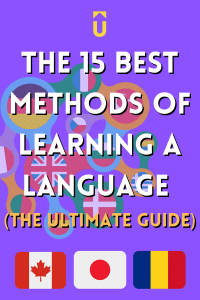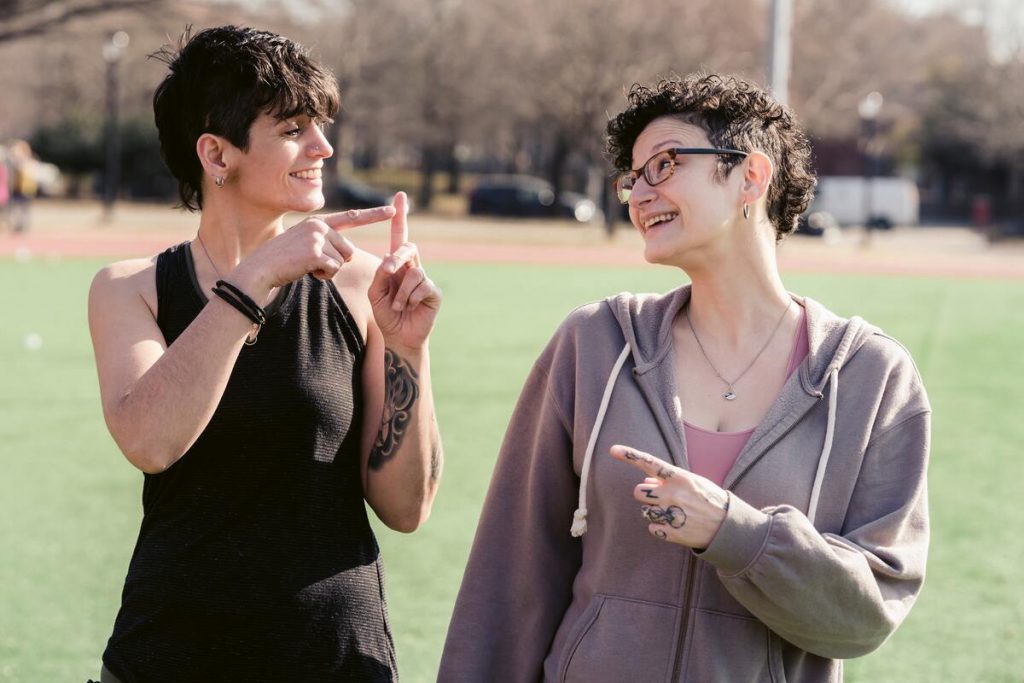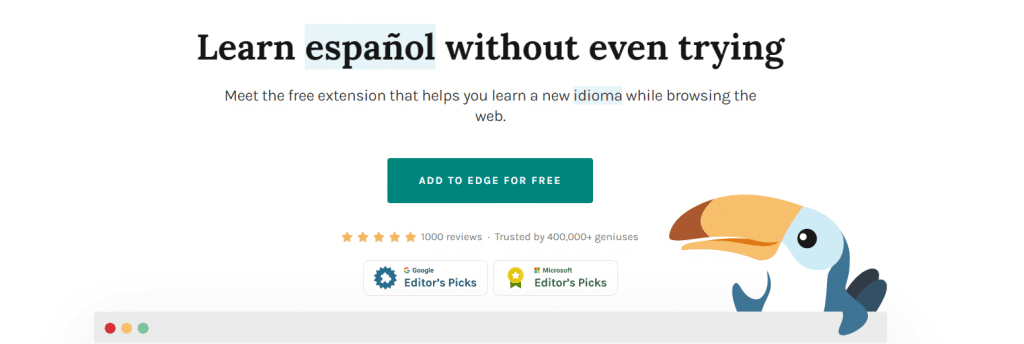The best methods of learning a language include:
- Speaking the language from the first day
- Full immersion
- Utilizing online and mobile resources
- Flashcards
- Relying on context clues
- Learning vocabulary before grammar
- Taking learning international
Not only have all these methods been proven, but they are some of the easiest ways to learn a language quickly and efficiently. You will find that many of these methods go hand in hand and take only a few moments to set up. Keep reading to learn how to utilize each of these methods when learning any language.
Speaking from Day One


There is a significant difference between studying something and putting it into practice. Just like reading a book about rocket science will not make you a rocket scientist, filing away a vocabulary will only get you so far.
While this is one of the best methods of learning a language, you will likely need to overcome some of your fears related to your vocabulary and the opportunity to make mistakes.
Working With Limited Vocabulary
When you start learning a language, you will not know many words, which is okay. But you would be surprised how many words you do know.
Many languages spoken today are derived from the same basic language structures, and you will find words between them that are slightly different but have the same meaning. These words are called cognates, and some examples include:
- Night: nui (French), noche (Spanish), nacht (German; Dutch), natt (Swedish; Norwegian)
- Comic: cómico (Spanish)
- Government: gobierno (Spanish), government (Old French), gubernus (Late Latin)
- Nourish: nutrir (Spanish), noris (Old French)
While these words are spoken in different places worldwide, their shared root allows them to have a similar sound. If you use a cognate in a conversation, there is a good chance that the other party will recognize the word.
Languages are also built with loan words, which are exact words taken from a different language to communicate the precise meaning. For example, “kindergarten” is actually derived from the same German word to refer to children’s school. Phrases like déjà vu are well known, despite their root in another language.
You are working with a lot more than you initially believed when it comes down to it. Your vocabulary will be limited, and it will be frustrating, but the stress of practice is what facilitates your growth, to provide you with some of the best methods of learning a language.
Comfortably Speaking with Someone

Not having someone that you can speak with can easily get in the way of this method, but there are a few solutions.
Suppose you have a friend interested in learning the same language. In that case, the two of you can work together to have conversations in the language and hold each other accountable for using the new language’s vocabulary over your native tongue.
You can join an in-person or online group to help you meet like-minded individuals who are on the same path. Several programs will pair you up with a fluent speaker to help you practice speaking the language from day one. Working with other people is definitely one of the best methods of learning a language.
The key to using the language in day-to-day life comfortably is letting go of your expectation to speak perfectly. Realistically, people still make mistakes in their native language, and no one bats an eye.
Most native speakers will be thrilled to see someone trying to communicate with them on their level instead of assuming things will be the other way around, and they are more than happy to help out when possible.
Would you buy a set of tools you never intend to use? When you use what you learn from the first day, you get actual use from the communication tool. When you keep it locked away in your mind, on flashcards, or in notebooks, you miss out on its true purpose.
Even if you just point out the words you learn to friends and family, you are putting your knowledge into practice.
Language Immersion
Even if you cannot create a completely immersive environment, this is one of the best methods of learning a language because it can adapt to any situation. On top of speaking the language from the first day, other parts of your life that are easy to swap languages on include:
- Social media pages
- The books/magazines you read
- Televisions that you watch (movies and shows)
- Music and radio that you listen to
It may not be realistic to completely switch to the new language but creating an environment where the language becomes part of your daily life will help it become second nature.
This is also a great free option for anyone learning a language on a budget. Finding resources in the language you are learning does not mean you need to go out and buy new media, and it is often as simple as switching something in your settings.
Social Media

We spend a lot of time on social media, and it is one of the easiest places you can immerse yourself in the language you are learning. Some ways you can do this include:
- Following popular influencers that speak the language you are learning on Youtube or TikTok
- Following popular pages on Facebook in that language, such as celebrities, news channels, or even meme posters
- Using the Facebook Live map or Snapmap to watch videos in countries that speak the language you are learning
- Following language-related users or hashtags on Twitter (Twitter will also translate any tweets beyond your comprehension).
As you learn more, you can even consider switching language settings on apps and sites to the language that you are learning so it becomes second nature as you are scrolling and switching through tabs, which makes it one of the most well utilized best methods of learning a language.
Reading
While learning a language only works when you can apply them to your lifestyle, you probably read more than you think you do. Because you are fluent in your native language, you read all the time without realizing it. Picking up a few social media posts or news stories in another language can help you reach the same level of proficiency.
Informally reading can definitely be a great way to learn linguistics and is one of the best methods of learning a language even in this technical day and age.
You should also take a hands-on approach to incorporate reading in learning a new language. As children, reading is fundamental to growing vocabulary and exercising our skills. This also applies to learning a new language, but you should be mindful of your skill level.
Taking the time to sit down with a short story and a translator is the same as reading a book as a child and looking words up in the dictionary, and it is an important launching point.
Make sure that anything you choose to read is on your level. Starting with children’s books is unlikely to overwhelm you while helping you practice basic vocabulary and sentence structures.
Once you get past this point, you can read books written with parallel text in your native tongue and the language you are learning. This helps you keep momentum while reading and lets you consume the work as a whole.
Consistency is key. Try to pick topics that interest you to maintain motivation, but do not limit yourself to these pieces. Because you are working on comprehension, you should still branch out from time to time.
Television
Movies and television shows can offer you the same level of immersion, but they have the extra benefit of allowing you to listen to the language. As with most best methods of learning a language, there are many ways that you can make this work for you.
Suppose you want to focus on utilizing resources you already have; you can switch your language settings on streaming services to the one you are learning. This may not be possible for everything you want to watch, but it is useful when available.
Try watching these shows and films without the subtitles as you become more proficient. You can also rewatch movies and shows you have already seen without subtitles and take advantage of the additional context clues.
Another of our best methods of learning a language option is using a service such as LingoPie to seek out videos in your target language. While this service is not free, you gain access to thousands of hours of media in different genres.
LingoPie provides 2 sets of subtitles that you can click on for instant translations and review vocabulary and grammar on the site. There is no need to pull out your phone or a dictionary, allowing you to maintain a more seamless watching experience.
Music and Radio

Audio learning methods like music, podcasts, and radio shows can help you fully immerse yourself in the language, even when you are pressed for time.
Music is an excellent tool for learning and 100% one of the best methods of learning a language. Rhymes and rhythms get stuck in our minds easily, making them a perfect tool for learning the linguistics of any language. You can also access it pretty much anywhere you go, as long as you have a capable device (and probably some headphones).
Finding music in a genre you enjoy means you can still get the same feel of the music, even if you do not understand all of the lyrics when you listen to it. You can sing along and work on pronunciation (but keep an ear out for any modified rhymes).
One of the best services that you can use for learning a language through is Pimsleur. It is unrivaled in audio narrated language learning content and one you should definitely check out and try.
Related: Best Apps To Learn a Language While Driving (No. 5 Is My Favorite)
You can also put on news or podcasts while doing other work to keep your brain listening out for any words you recognize. Trying to discern what is said or reported can help you witness the language that serves to inform, not entertain.
Using Online Resources
We live in an age of technology, and it only makes sense to use every tool at your disposal to move forward in life. This includes online resources, and you might find that these make up the bulk of your toolset.
This goes beyond Google translate (although that is a quick and easy way to find the meaning of words). Try to start with 1 to 3 resources when you start; too many can be repetitive, but you want to have enough to provide value while you learn.
At the very least, you need something that can cover vocabulary and language structure. You might find both these subjects covered extensively in one app, or you may like how another site teaches a subject better.
Related: Best Apps to Learn a Language While Driving(No. 5 Is My Favorite).
Gathering a list of applications, websites, and online courses can help you outgrow your coursework. Try not to limit yourself to general language sites, either. Look for sites and programs that specialize in the language you are learning.
Applications
Applications on their own are one of the best methods of learning a language that you should take advantage of. You can quickly sift through reviews on app marketplaces like the iOS App Store or Google Play, and these programs are easy to take along with you.
Applications like DuoLingo help you keep track of your progress and often provide in-app rewards for your progress. You can adjust your settings to receive a reminder every day to practice your language, ensuring you do not forget.
Because these can be kept in your pocket, you can also use applications to fill in any dead time you have and work on language learning practically anywhere.
Websites and Online Courses

Another one of our best methods of learning a language are websites and online courses might be more extensive or immersive than applications, and you are more likely to end up in a classroom with other students or receive one-on-one help from a qualified teacher.
Depending on the type of online course you sign up for, you can receive actual grades and feedback, as well as coursework fitted to your experience level.
You can also look into online tools and extensions such as Toucan to create a more immersive experience in your daily computer use. Toucan shows you words and phrases in your target language as you browse. You can also test your skills using quizzes and games fitted to your capabilities.
Flashcards
While it is not a great idea to make flashcards for every single word that you learn (you aren’t writing a dictionary), this is a scientifically proven tool to improve your memory in areas of struggle.
There are many ways to use flashcards to your advantage, and you do not need to subscribe to any specific method. Try everything and use what helps things stick for you.
Some ideas include:
- Going beyond simple translations (conjugations, definitions instead of translations, fill in the blank sentences)
- Color coding (can help with subconscious connections; can code based on parts of speech, subject, or difficulty)
- Retiring cards as you become proficient in them
You can stick to traditional paper flashcards, use a modified Cornell method, or look to online methods. Many online applications and websites have flashcards built to assist learning, but you should look for a customizable tool like Anki to create tools that fit your journey.
Anki allows you to sync cards across multiple devices, so they are always available, and you can add media like audio clips or videos to your cards.
The program uses spaced repetition and active recall methods to assist in learning, making this one of the best methods of learning a language with flashcards.
Relying on Context Clues
We already talked about how you know more words in your target language than you previously thought, and you mustn’t underestimate your brain’s ability to use context clues to derive meaning. Even non-cognates can be easily defined if you have enough contextual evidence.
Your brain does not even pay attention to every word you hear in your native tongue. Instead, it gathers information and creates connections between which words often appear together. This allows your brain to process speech faster, which is what is at work when you rely on context clues.
This is one of the best methods of learning a language that can be difficult to implement because we do not like being put in a position to be wrong, but this rampant growth is essential for moving forward.
The more you exercise your brain’s ability to use context clues in your target language, the more efficient it becomes.
Vocabulary Before Grammar
One of the easiest ways to kill your motivation for learning a new language is by biting off more than you can chew. Your immediate goal is to understand and communicate in the language, and focusing on vocabulary will get you there without overwhelming you.
Again, think about how children communicate when they first start to speak. Instinctually, the focus is on vocabulary.
Vocabulary is the foundation of a language, and grammar is what cleans it up. You will get farther by filling up on words than you will with grammar rules, and grammar can always be applied afterward.
Taking Learning International

Full immersion is one of the best methods of learning a language and taking a trip to a country that primarily speaks that language is the easiest way to get there. This can be intimidating, but it forces you to adapt in ways you likely never thought possible.
Related: Should you learn local language when living abroad?
This does not mean you should just book a flight with no plans in place but traveling with a friend or finding a host family is a great place to start.
If you cannot afford to take a trip, you can still access international and authentic knowledge. Consider finding a pen pal who speaks in that language. The two of you can even trade-off and help each other learn a different language, and you just might have a friend for life.
The Bottom Line
These methods of learning a language will only work if you employ them. Take steps to stay motivated to learn and set up accountability partners and methods to encourage your journey.
This is a daunting task, but millions of people have done it. It is never too late to start, and technology has made it more accessible than ever. All you need to do is make a commitment and move forward, and you can be speaking a new language in no time at all.
Catch you soon

Hey, I’m Kris Taylor. I’m a Learning and Development professional currently in the healthcare field, with over 8 years of experience in the area of corporate education. I have created numerous instructional content for various corporate projects including eLearning, in-person facilitation, and virtual training across a wide variety of learning interventions and sectors. On Taughtup, I discuss topics ranging from how to succeed through K-12 to college all the way to instructional design tips for L&D designers.






